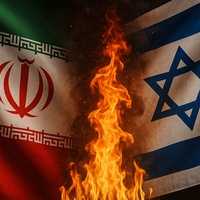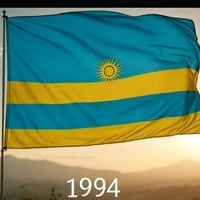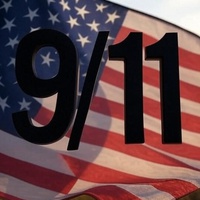Samuel Adisa
Student @ Akungba
IRAQ 2003

<p>The Iraq War, which began in 2003, was a significant and controversial conflict initiated by the United States, alongside a coalition of allies, primarily the United Kingdom, Australia, and Poland. It’s often linked to the broader "War on Terror" following the 9/11 attacks, though its justifications and outcomes remain heavily debated. Below is a concise overview of the war’s key aspects, including its causes, major events, and consequences, based on historical records and analyses.
</p><p>Background and Causes
</p><p>Post-9/11 Context: After the September 11, 2001, attacks, the U.S., under President George W. Bush, focused on combating terrorism globally. While al-Qaeda and Afghanistan (where they were based) were the initial targets, attention shifted to Iraq.
</p><p>Primary Justifications:
</p><p>Weapons of Mass Destruction (WMDs): The Bush administration claimed Iraqi President Saddam Hussein possessed WMDs, including chemical and nuclear weapons, posing a global threat. This was based on intelligence reports, later found to be flawed, such as the 2002 National Intelligence Estimate.
</p><p>Links to Terrorism: The U.S. alleged ties between Saddam’s regime and al-Qaeda, suggesting Iraq could supply terrorists with WMDs. These links were later disproven by the 9/11 Commission and other investigations.
</p><p>
</p><p><br></p><p>Regime Change and Democracy Promotion: The U.S. aimed to remove Saddam, a brutal dictator, and establish a democratic government in Iraq as a model for the Middle East.
</p><p>
UN Involvement: The U.S. sought UN support for action against Iraq. UN Resolution 1441 (November 2002) demanded Iraq allow weapons inspections, but disagreements over evidence and enforcement led the U.S. to act without explicit UN authorization.
</p><p>Public and Global Divide: The lead-up to the war saw massive global protests, with millions opposing the invasion in cities like London, Rome, and New York. Many allies, like France and Germany, opposed military action, favoring continued inspections.
</p><p>Timeline of Major Events
</p><p>March 19, 2003: The war begins with a U.S.-led airstrike on Baghdad, targeting Saddam Hussein (who survived). Known as "Operation Iraqi Freedom," the invasion involved a "shock and awe" bombing campaign to weaken Iraqi defenses.
</p><p>March–April 2003: Coalition ground forces, primarily U.S. and British troops, advance rapidly from Kuwait. Key cities like Basra and Nasiriyah are captured. By April 9, U.S. forces enter Baghdad, and Saddam’s statue in Firdos Square is famously toppled, symbolizing the regime’s fall.
</p><p>May 1, 2003: President Bush declares “major combat operations” over aboard the USS Abraham Lincoln, under a banner reading “Mission Accomplished.” However, this marks the beginning of a prolonged insurgency.
</p><p>Insurgency and Sectarian Violence (2003–2007):
</p><p>Resistance: Former Ba’athists, Sunni insurgents, and al-Qaeda in Iraq (AQI) launch attacks on coalition forces and Iraqi civilians. Tactics include roadside bombs (IEDs), suicide bombings, and kidnappings.
</p><p>Sectarian Conflict: Tensions between Sunni and Shia Muslims escalate, fueled by the power vacuum and de-Ba’athification policies that alienated Sunnis. Militias, like the Shia Mahdi Army, clash with Sunni groups.
</p><p>Key Incidents:
</p><p>Abu Ghraib Scandal (2004): Photos reveal U.S. military personnel abusing Iraqi prisoners, damaging U.S. credibility globally.
</p><p>Fallujah Battles (2004): U.S. forces engage in intense urban combat with insurgents in the Sunni city of Fallujah.
</p><p>
Saddam’s Capture and Execution:
</p><p>December 13, 2003: Saddam Hussein is captured by U.S. forces in a spider hole near Tikrit.
</p><p>Trial and Execution: Saddam is tried by an Iraqi court for crimes against humanity, including the 1982 Dujail massacre. He is executed by hanging on December 30, 2006.
</p><p>
The Surge (2007–2008): Facing escalating violence, the U.S. deploys an additional 30,000 troops under General David Petraeus. The “surge,” combined with the Sunni Awakening (where Sunni tribes turned against AQI), reduces violence significantly by late 2008.
</p><p>U.S. Withdrawal:
</p><p>2010: Combat operations officially end, though U.S. troops remain in advisory roles.
</p><p>December 2011: The last U.S. combat troops withdraw, leaving Iraq to manage its own security. However, instability persists.
</p><p>Consequences
</p><p>Human Cost:
</p><p>Iraqi Casualties: Estimates vary widely. The Iraq Body Count project documented over 100,000 civilian deaths by 2011, while studies like the 2006 Lancet survey estimated up to 600,000 excess deaths from violence and indirect causes.
</p><p>Coalition Casualties: Over 4,400 U.S. troops and 179 British troops were killed, with tens of thousands wounded.
</p><p>Displacement: Millions of Iraqis were displaced internally or became refugees, particularly in Jordan and Syria.
</p><p>
Political Impact:
</p><p>Power Vacuum: The fall of Saddam’s Sunni-dominated regime led to a Shia-led government, increasing Iran’s influence in Iraq. Sectarian governance deepened divisions.
</p><p>Rise of ISIS: The insurgency and instability paved the way for the rise of the Islamic State (ISIS), which captured large parts of Iraq, including Mosul, by 2014, prompting renewed U.S. involvement.
</p><p>
WMD Findings: No stockpiles of WMDs were found, undermining the primary justification for the war. The Iraq Survey Group concluded in 2004 that Saddam had dismantled his WMD programs in the 1990s but maintained the intent to restart them.
</p><p>Economic Cost: The war cost the U.S. over $2 trillion, according to Brown University’s Costs of War project (as of 2021), contributing to national debt and diverting resources from domestic programs.
</p><p>Global Impact:
</p><p>U.S. Credibility: The lack of WMDs and the Abu Ghraib scandal damaged U.S. moral authority. Allies like France and Germany felt vindicated in their opposition.
</p><p>Middle East Instability: The war destabilized the region, contributing to the Arab Spring, the Syrian Civil War, and the rise of ISIS.
</p><p><br></p><p>Domestic Impact in the U.S.:
</p><p>Political Divide: The war polarized American politics, with figures like Barack Obama (elected in 2008) campaigning on ending U.S. involvement.
</p><p>Veterans: Returning troops faced challenges like PTSD, with the VA struggling to meet their needs.
</p><p><br></p><p>
Legacy and Debate
</p><p>Was It Worth It?: The war remains controversial. Supporters argue it removed a dictator and planted seeds for democracy (Iraq held elections in 2005). Critics highlight the lack of WMDs, the immense human and financial cost, and the unintended rise of ISIS as evidence of failure.
</p><p>Chilcot Inquiry (UK, 2016): The British inquiry criticized the UK’s decision to join the war, finding the threat from Iraq was exaggerated and alternatives to war were not exhausted.
</p><p>Current State (2025): Iraq remains fragile, with ongoing sectarian tensions, corruption, and periodic violence. U.S. troops (around 也好
</p><p>
</p><p>
</p><p>
</p><p>
</p><p>
</p><p>
</p><p>
</p><p>
</p><p>
</p><p>
</p><p>
</p><p>
</p><p>
</p><p>
</p><p>
</p><p>
</p><p>
</p><p>
</p><p>
</p><p>
</p><p>
</p><p>
</p><p>
</p><p>
</p><p>
</p>
Other insights from Samuel Adisa
Referral Earning
Points-to-Coupons
Insights for you.





 57
57






























































Comments